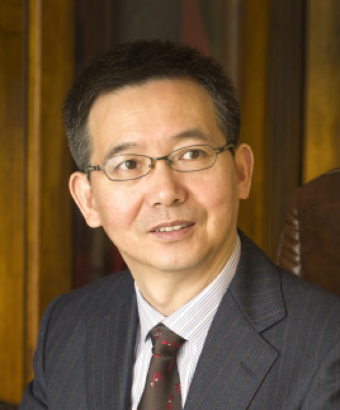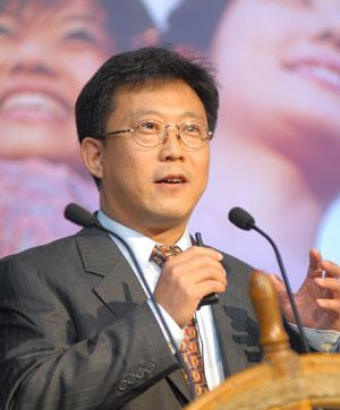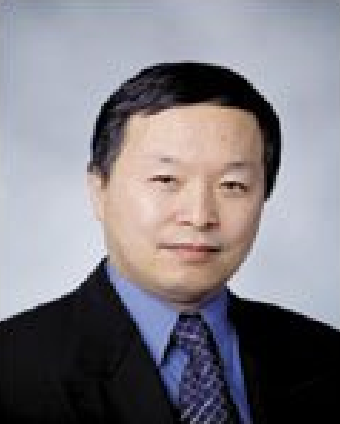-

硅基发光材料与器件
杨德仁 浙江大学
中国科学院院士。现任浙江大学工学部主任,同时任浙大宁波理工学院校长,硅材料国家重点实验室学术委员会主任。长期从事半导体硅材料的研究,涉及超大规模集成电路用硅材料,太阳能光伏硅材料、硅基光电子材料和纳米半导体材料。在半导体硅材料的晶体生长、缺陷工程和纳米结构的基础研究上取得重大成果,研究成果不仅产生重要国际影响,而且在生产实际中产生重大经济效益。以第一获奖人获得国家自然科学二等奖2项,国家技术发明二等奖1项,何梁何利科学与技术奖1项,省技术发明/进步一等奖4项。
报告摘要:
硅基光电子是集成微电子和光电子的优势,是今后信息产业的一个重要前沿方向。硅基发光需要在集成电路工艺兼容的基础上,在硅或硅基材料上实现激光,用于硅基光电集成的光源,是国际学术界和产业界重点关注的目标。报告将介绍硅基发光材料和器件的国内外研究现状和进展,阐述目前遇到的技术难点和研究重点,并简要介绍本研究团队近年来在硅基发光领域的研究结果。 -

High bandwidth density and energy efficiency optical I/O based on silicon photonics and CMOS electronics
Haisheng Rong Intel Labs
Dr. Haisheng Rong is a Senior Principal Scientist with Intel Labs. He leads the silicon photonics research for high-speed optical interconnect and high-performance computing applications. He has worked in many areas of optical and laser technologies during his career. Before joining Intel, he held research positions at MIT and Caltech working on the LIGO project for direct detection of gravitational waves. He has published over 100 research papers in peer-reviewed journals including Nature and Nature Photonics and holds over 40 issued US patents. He has been recognized by Scientific American as one of the research leaders in science and technology with the Scientific American 50 award for his pioneering work on the development of silicon-based lasers. He is the recipient of numerous Intel awards including the prestigious Intel Achievement Award and Intel Labs Academy Award for his outstanding research achievements. He is a key member of the Intel team winning the Paul F. Forman Team Engineering Excellence Award from the Optical Society of America (OSA). He received his Ph.D. degree from Heidelberg University, Germany, M.S. and B.S. degrees from Nankai University, China. He is a Fellow of OSA and a Senior Member of IEEE.
报告摘要:
While digital processing units such CPU/GPU/FPGA continue to improve their performance with advanced process nodes, electrical I/O technologies are facing growing challenges in scaling bandwidth density and energy efficiency, limiting the over-all computing power of the platform. Bringing photonics closer to the processing units will enable simultaneous improvements in both I/O bandwidth (BW) density and power efficiency, necessary to meet the demands of next-generation data center and high-performance computing applications. In this talk, I’ll present a high-speed photonic link architecture based on integrated on-chip lasers and all-silicon ring modulators and photodetectors. The transmitter and receiver are all driven by CMOS electronics. Owing to their small footprint, silicon photonic micro-rings are a key technology for high-density photonic integration. Their resonant nature makes them ideally suitable for a DWDM link and BW scaling. We have demonstrated micro-ring modulators up to 128 Gb/s NRZ modulation and silicon micro-ring resonant photodetectors up to 112Gb/s PAM4 detection, eliminating the need for Ge or III-V materials enabling cost-sensitive datacenter and computing applications. -

硅基光电子集成技术产业化机遇与挑战
黄卫平 山东大学
山东大学信息学院院长、特聘教授,青岛海信宽带多媒体技术有限公司创始人、董事长。1982年毕业于山东大学,1984和1989年获中国科技大学硕士和美国麻省理工学院博士学位。1989年至2013年在加拿大滑铁卢和麦克马斯特大学任教,从事光电子及光通讯方面的研究与创新。1995年创办Apollo Photonics公司,成功开发推广全球领先光电子芯片设计软件。2003年创办海信宽带多媒体技术公司,发展成为通讯光模块领军企业,2020年全球排名第三。2013年回国出任海信集团首席科学家和山东大学信息学院院长。在集成光电子学理论和设计等方面做出一些开创性成果,发表300多篇国际学术刊物与会议专业论文。